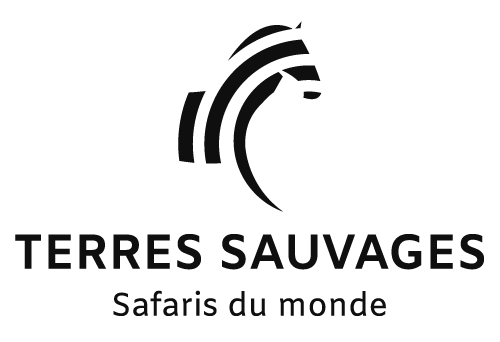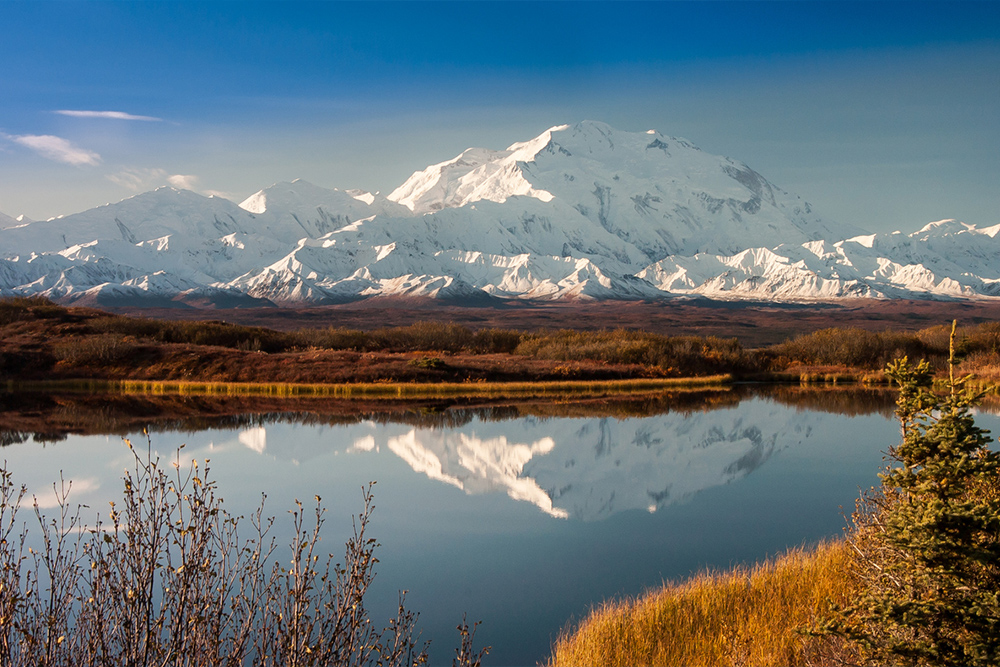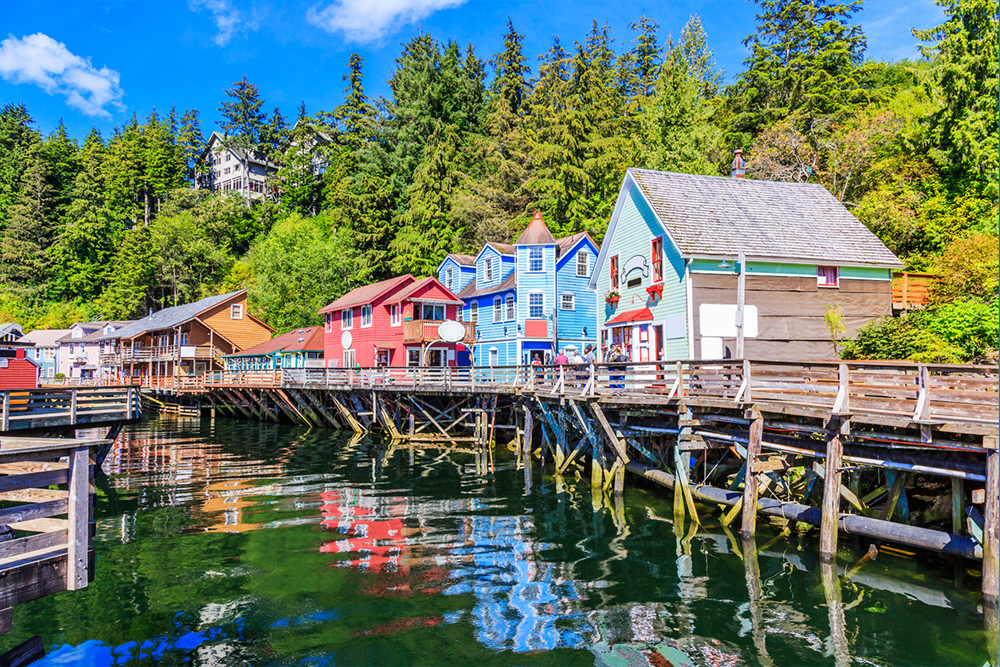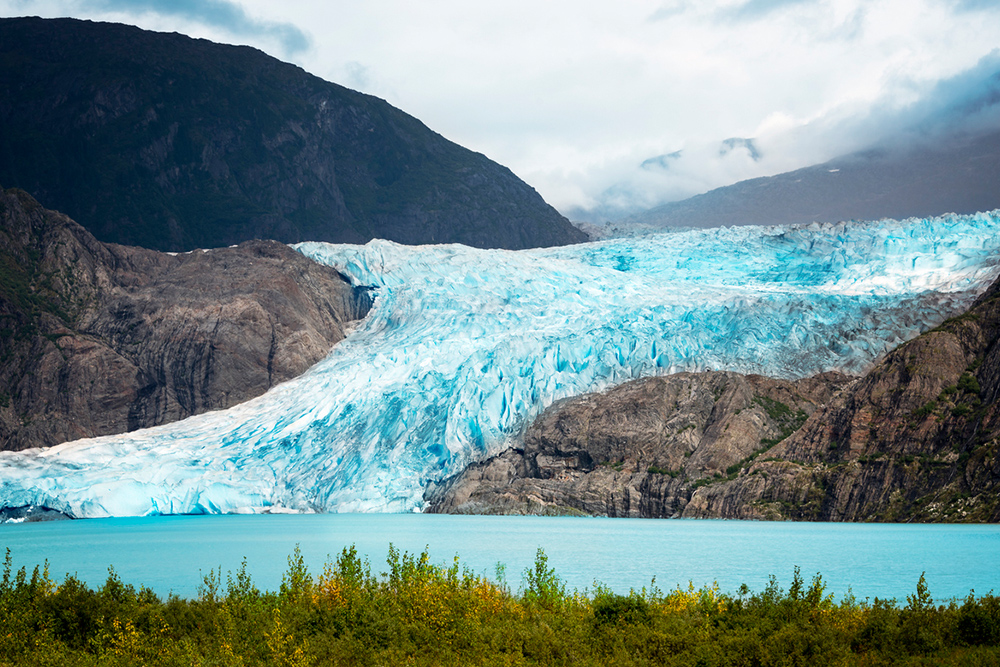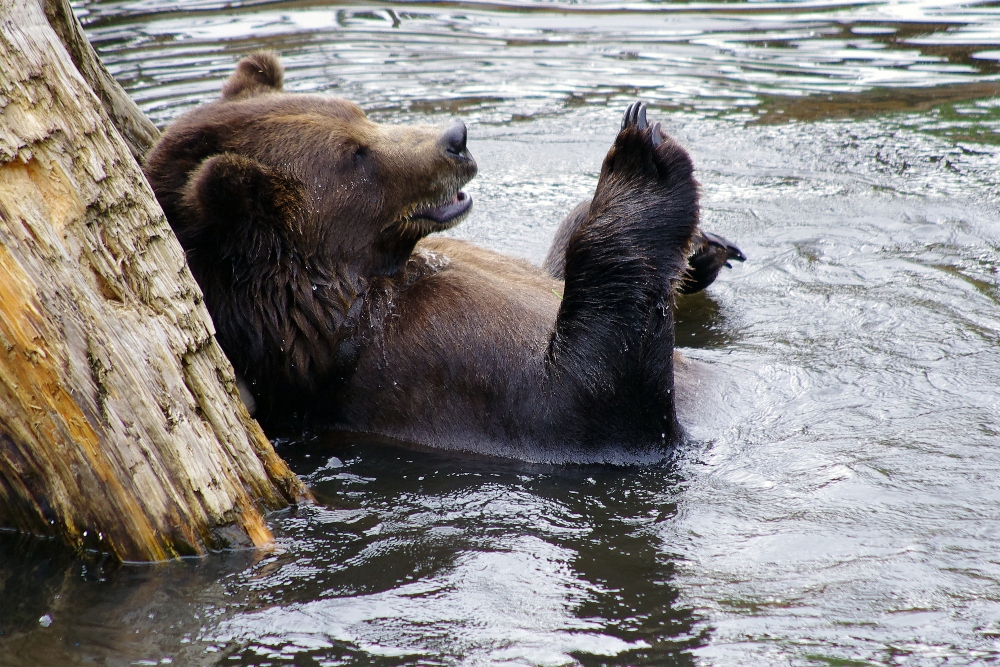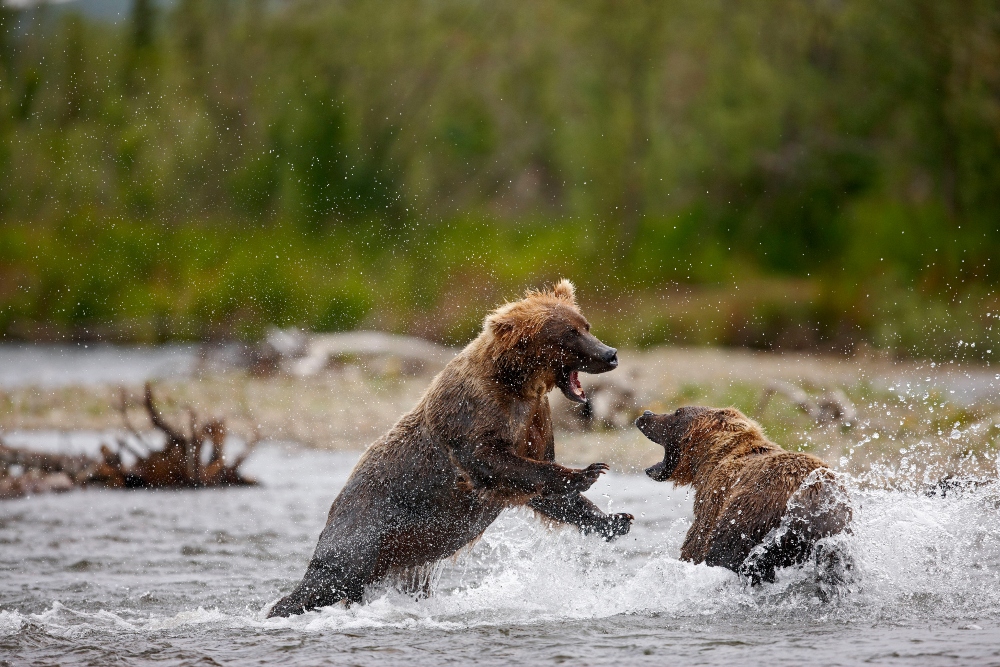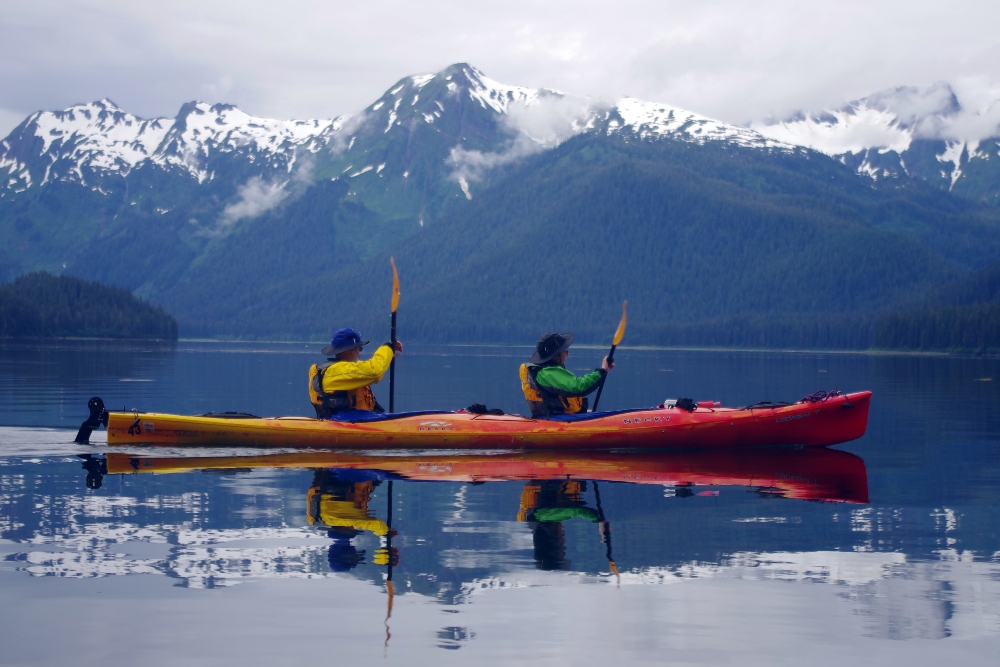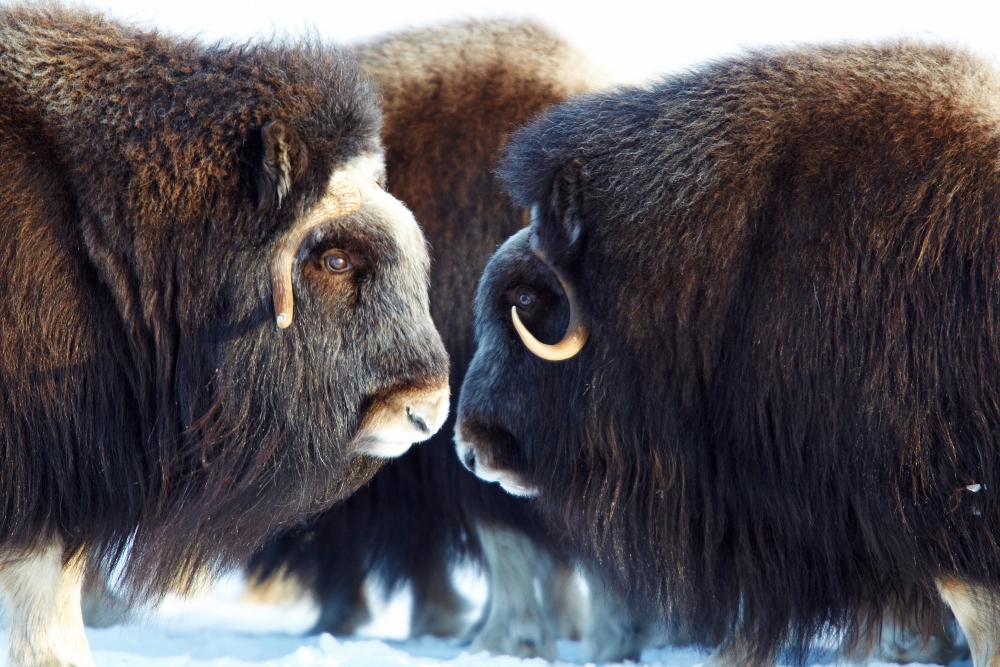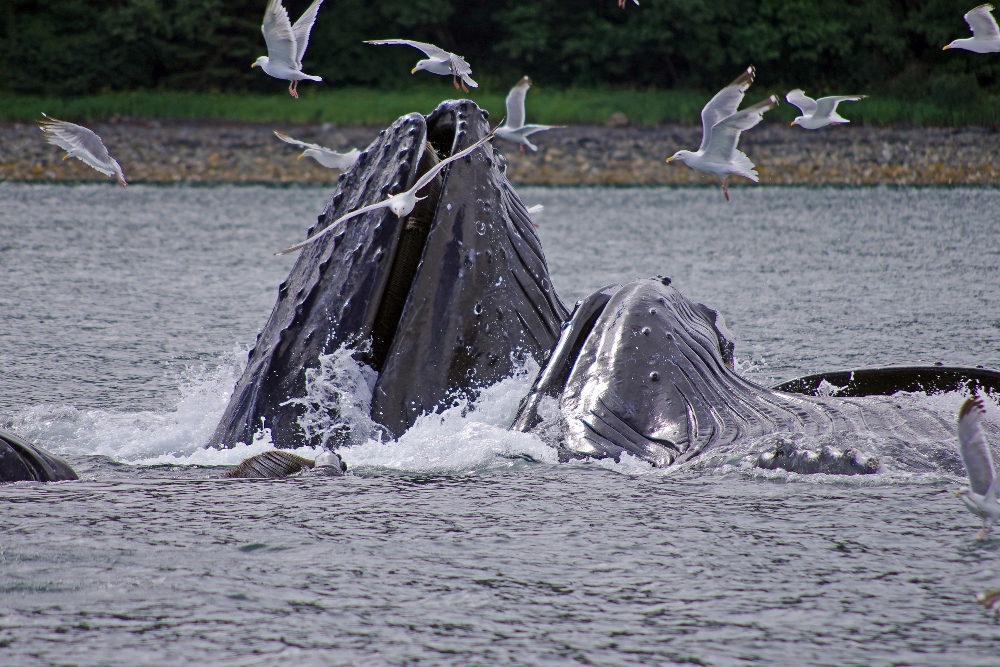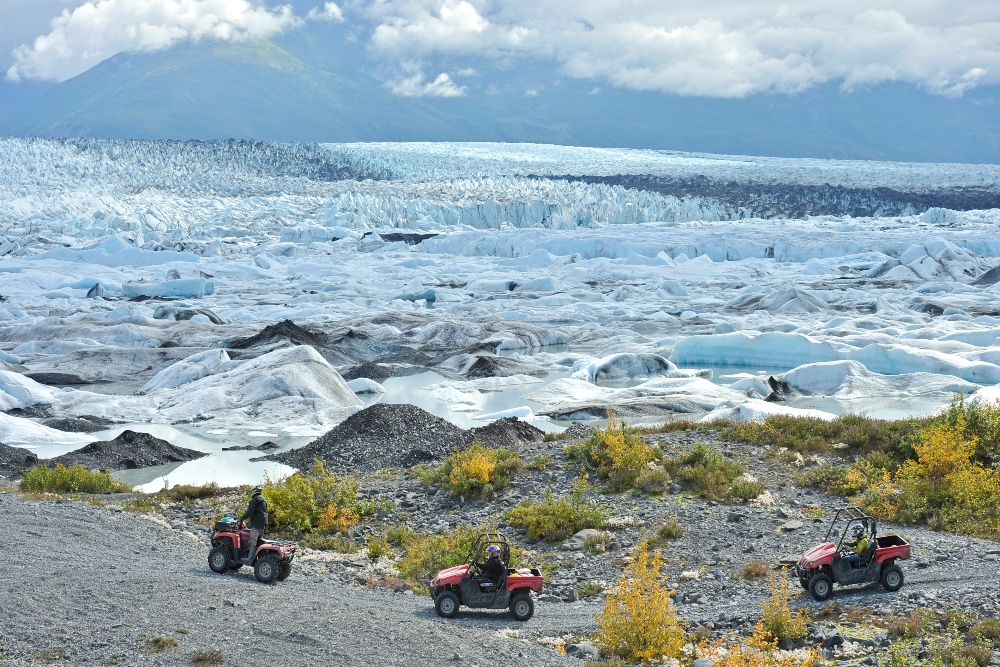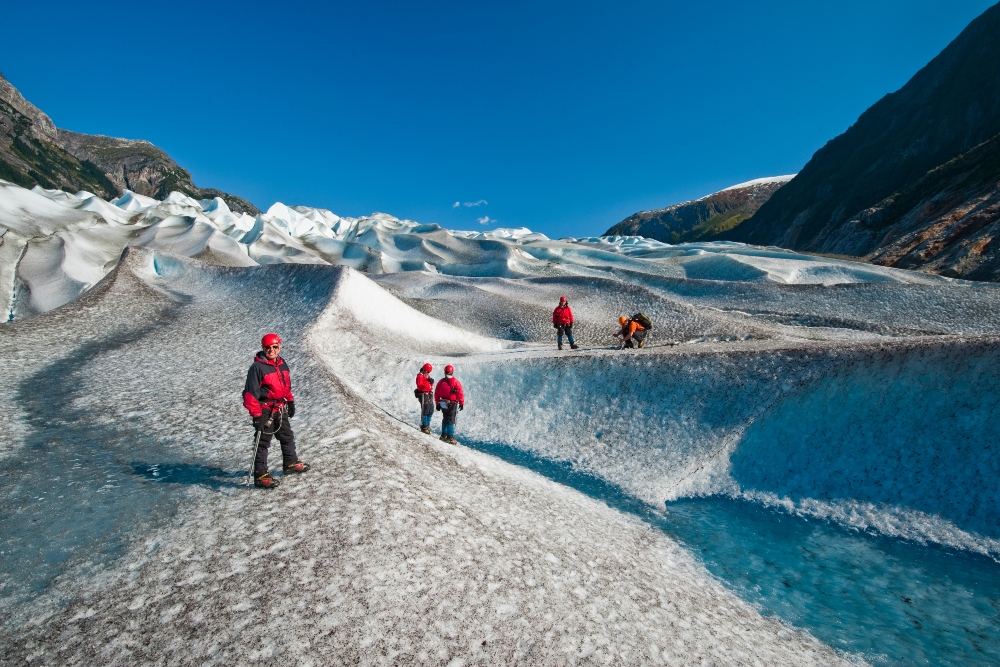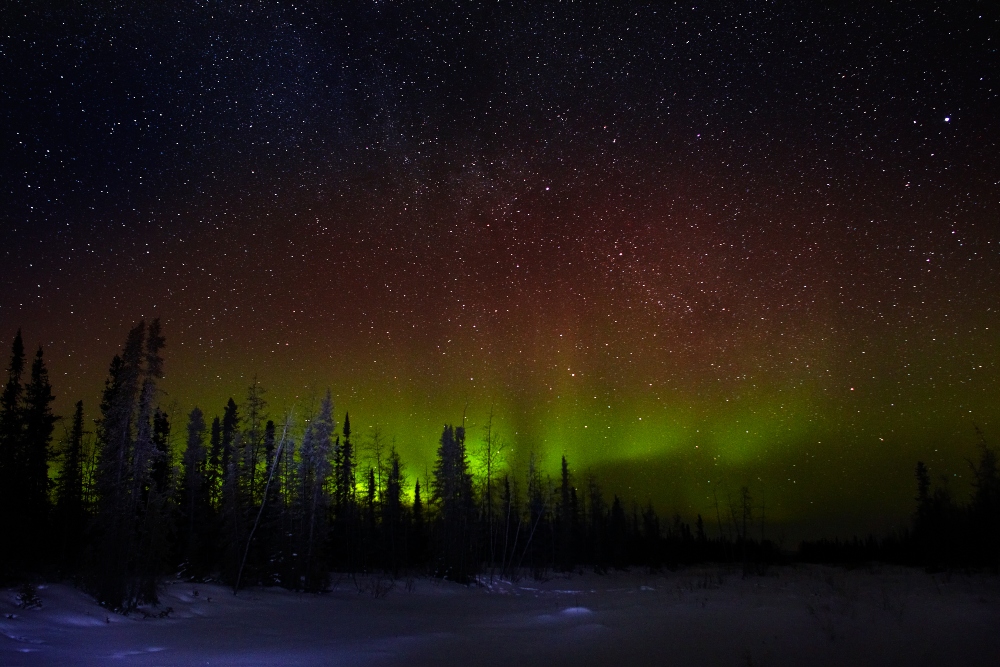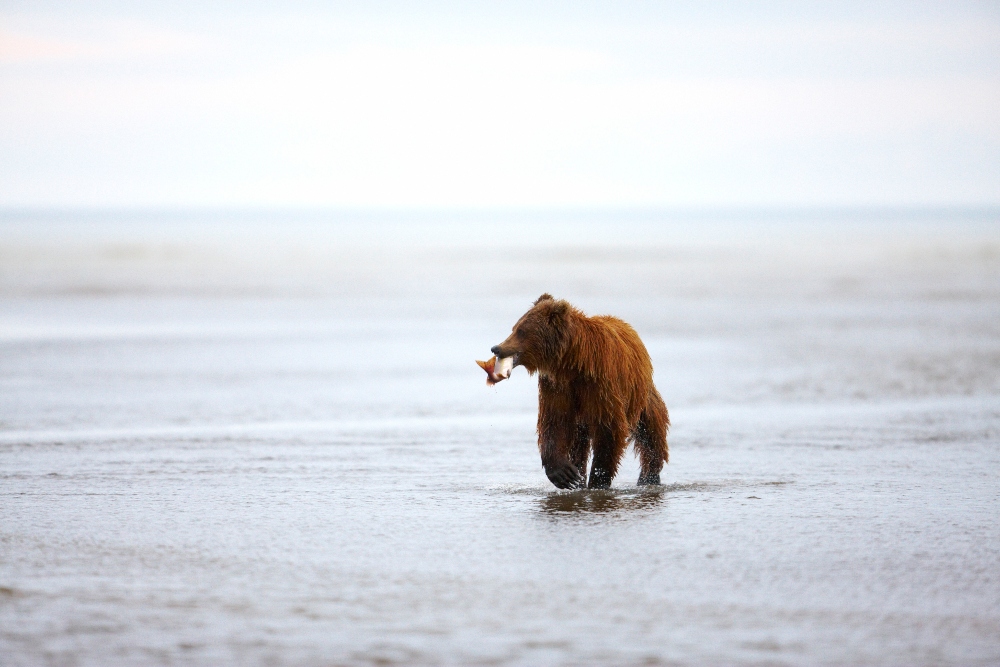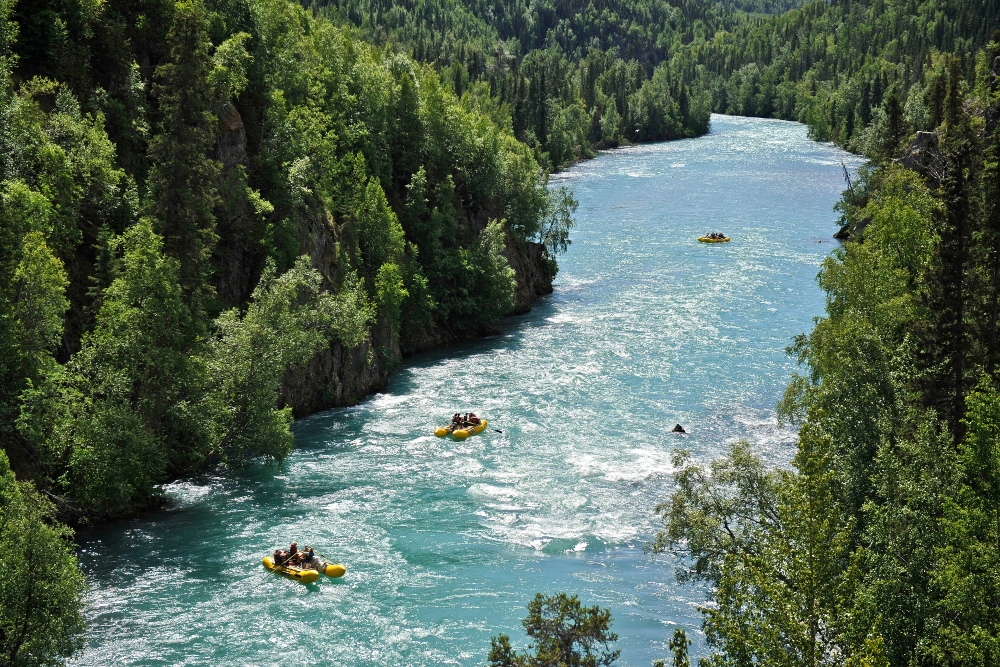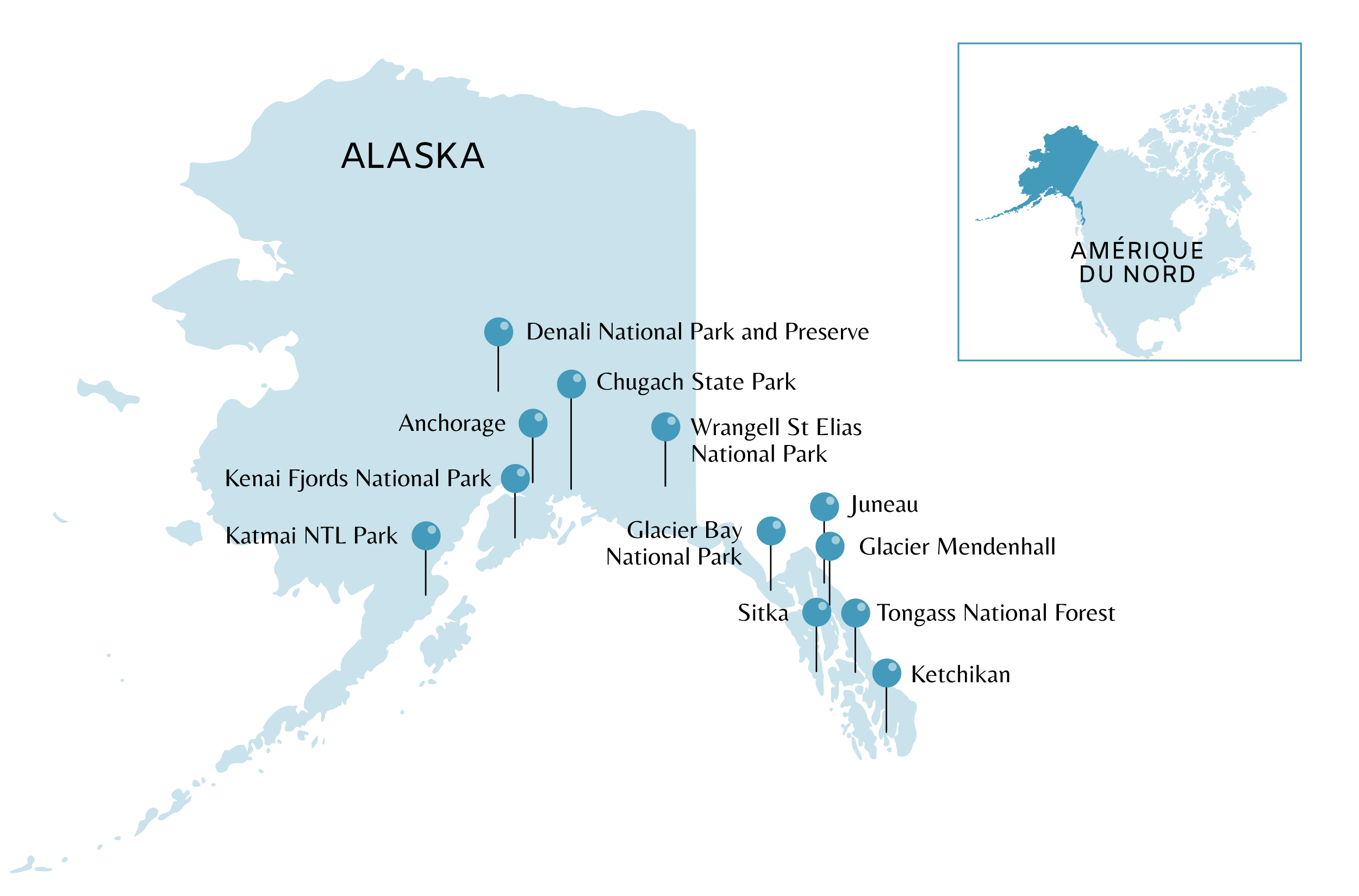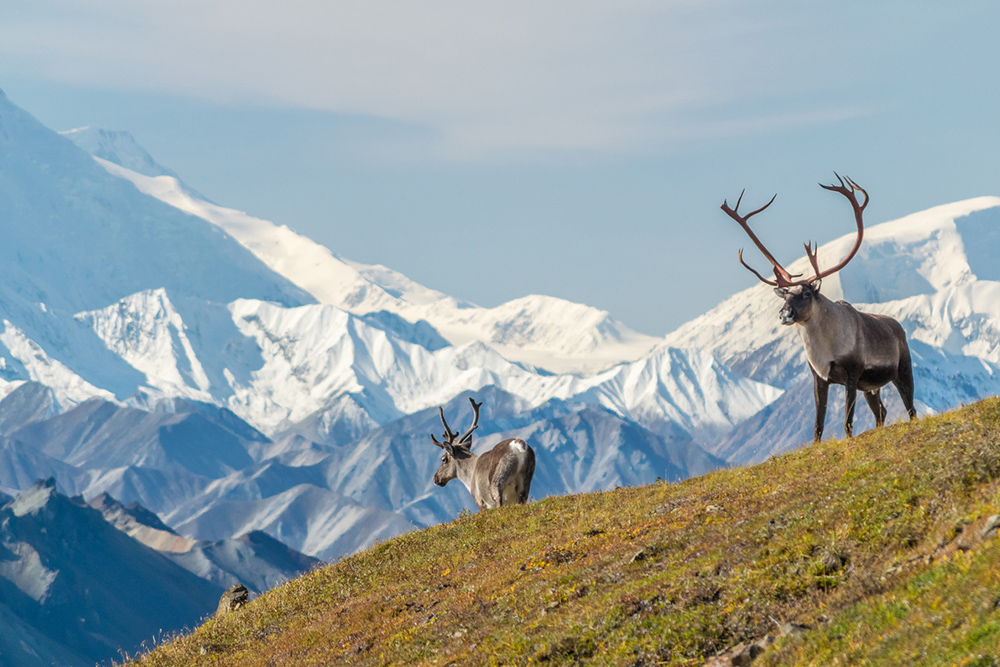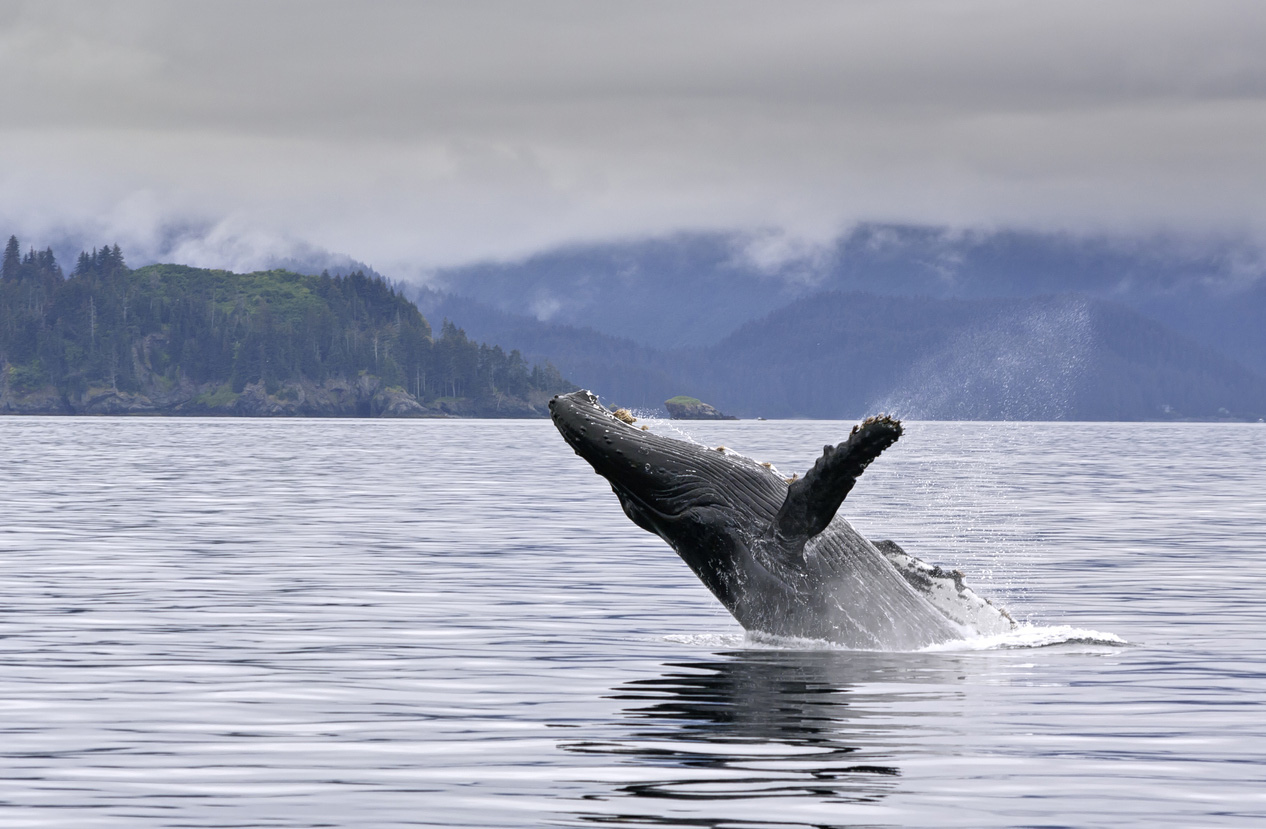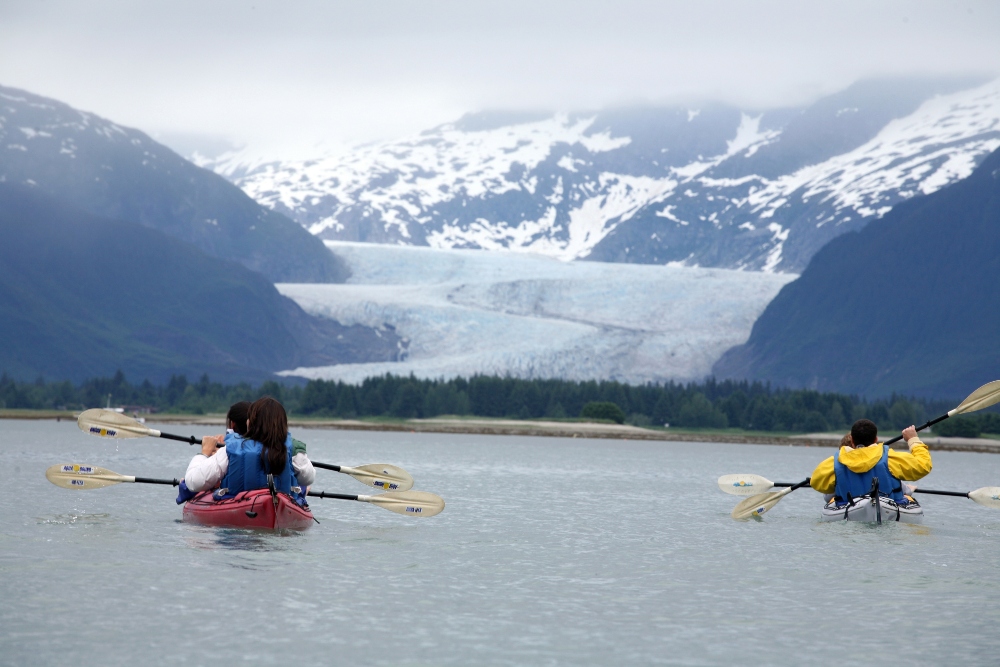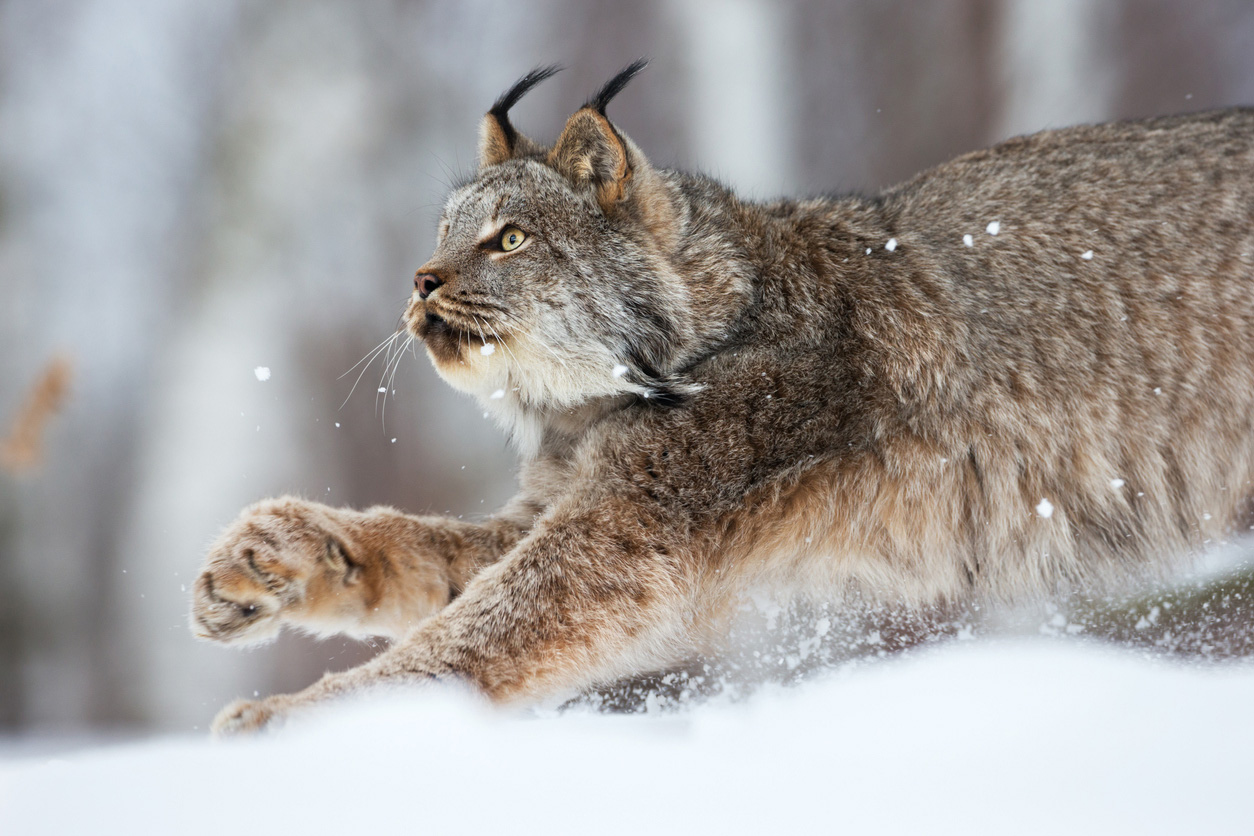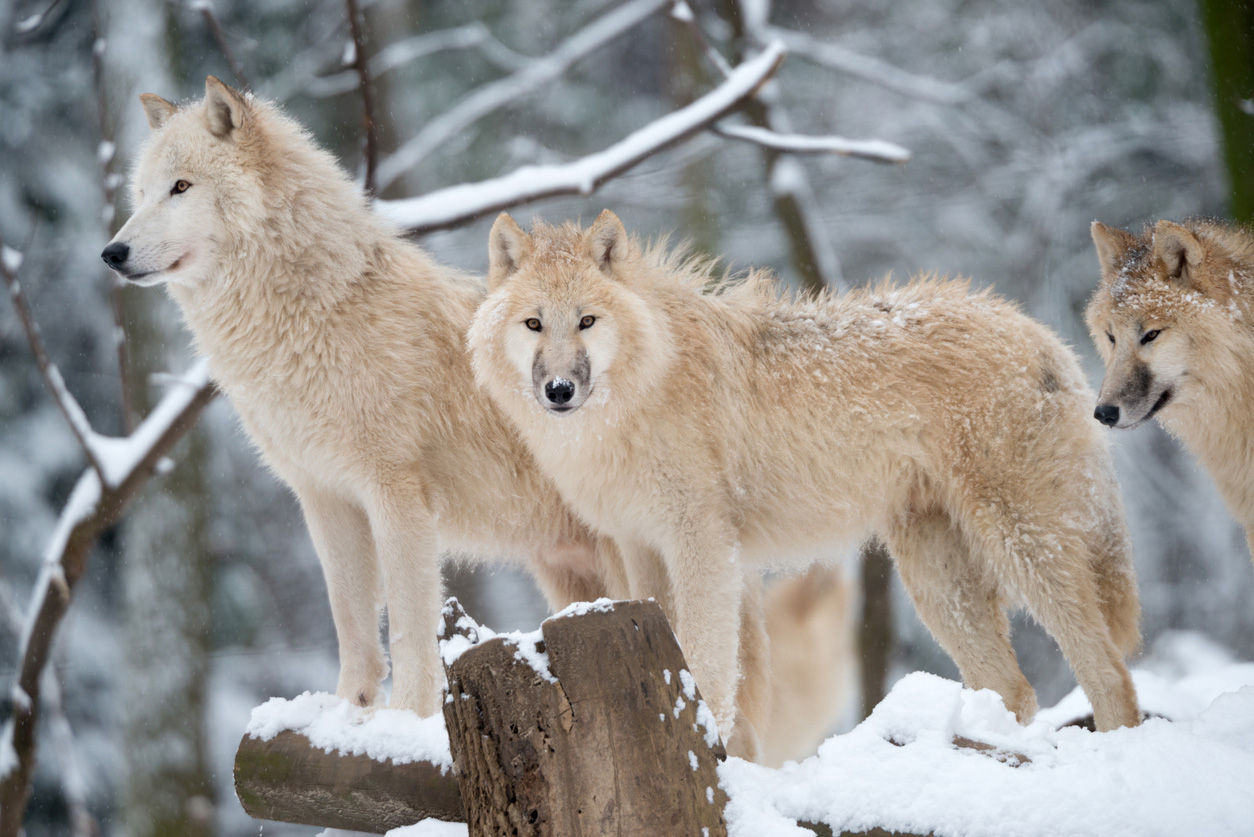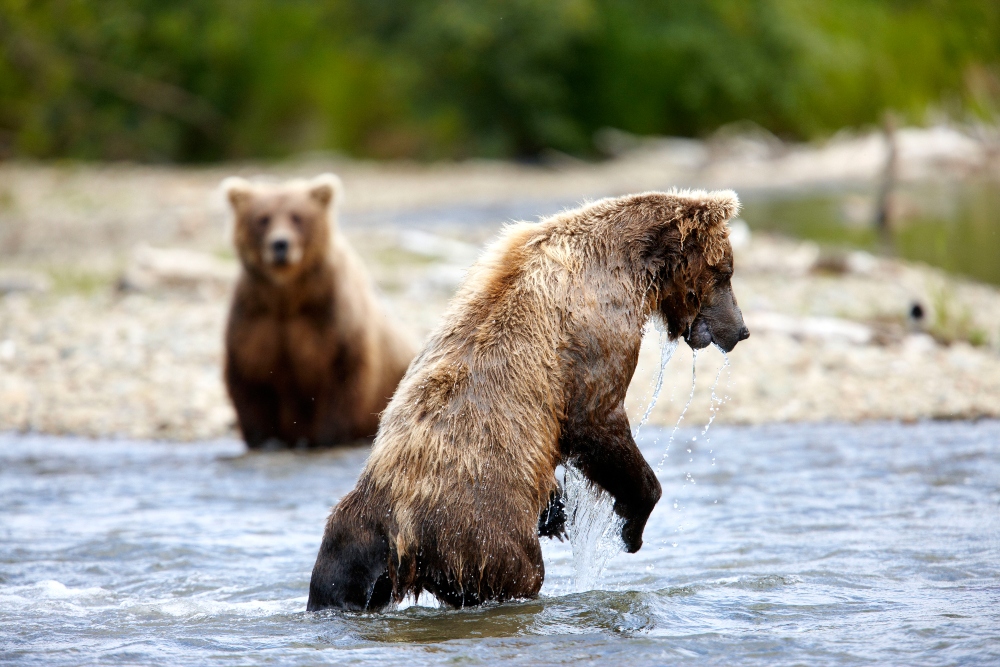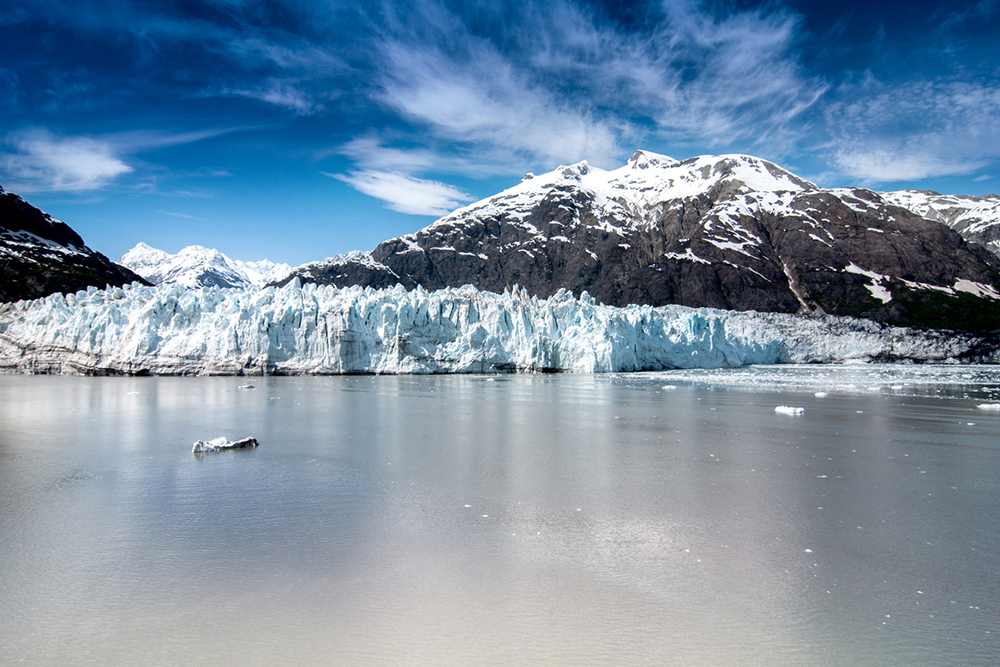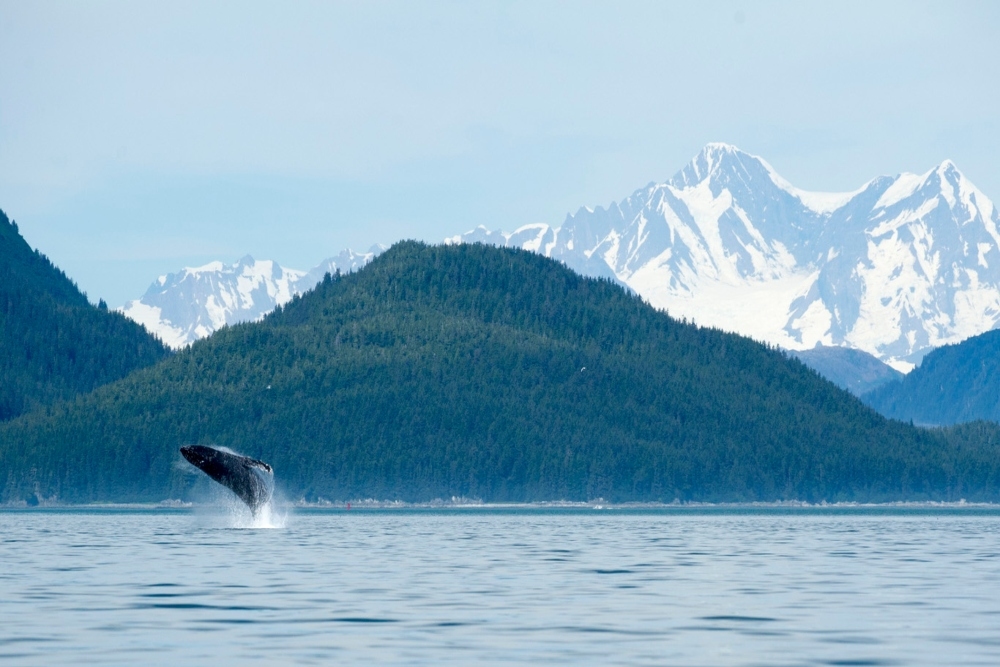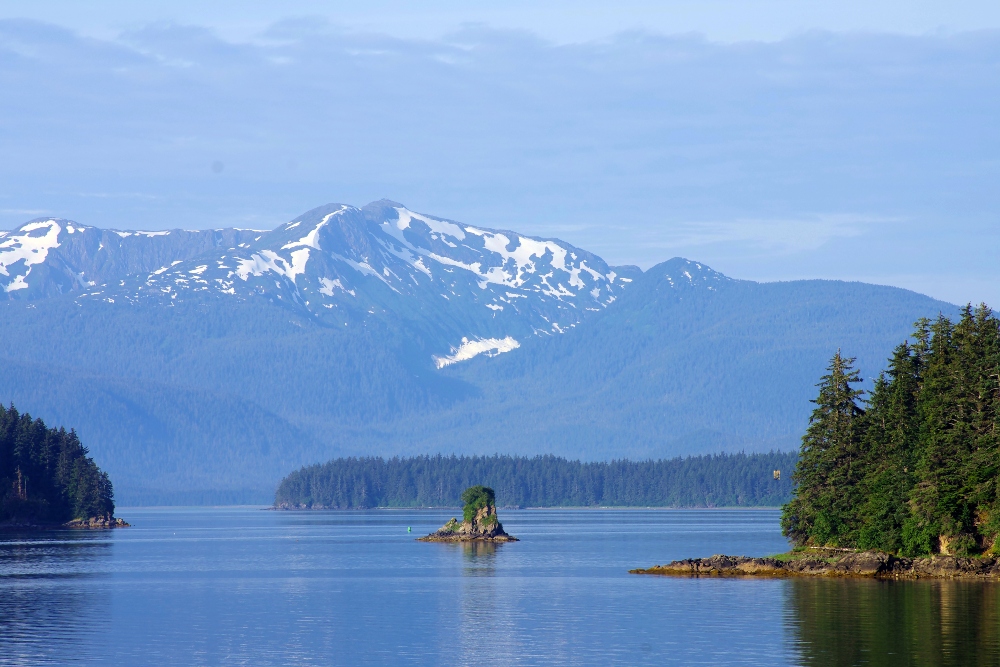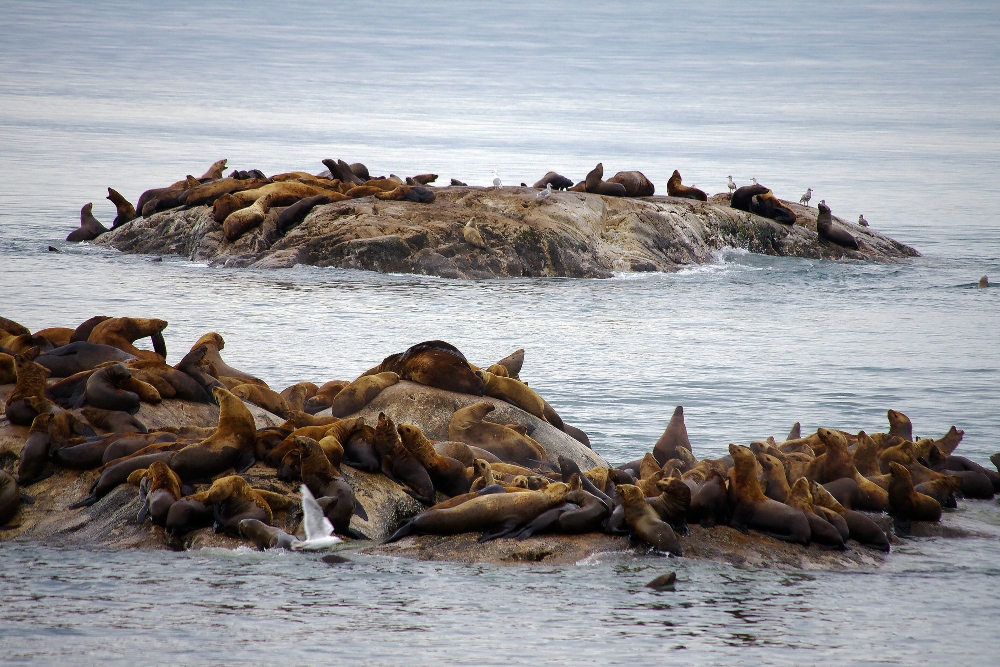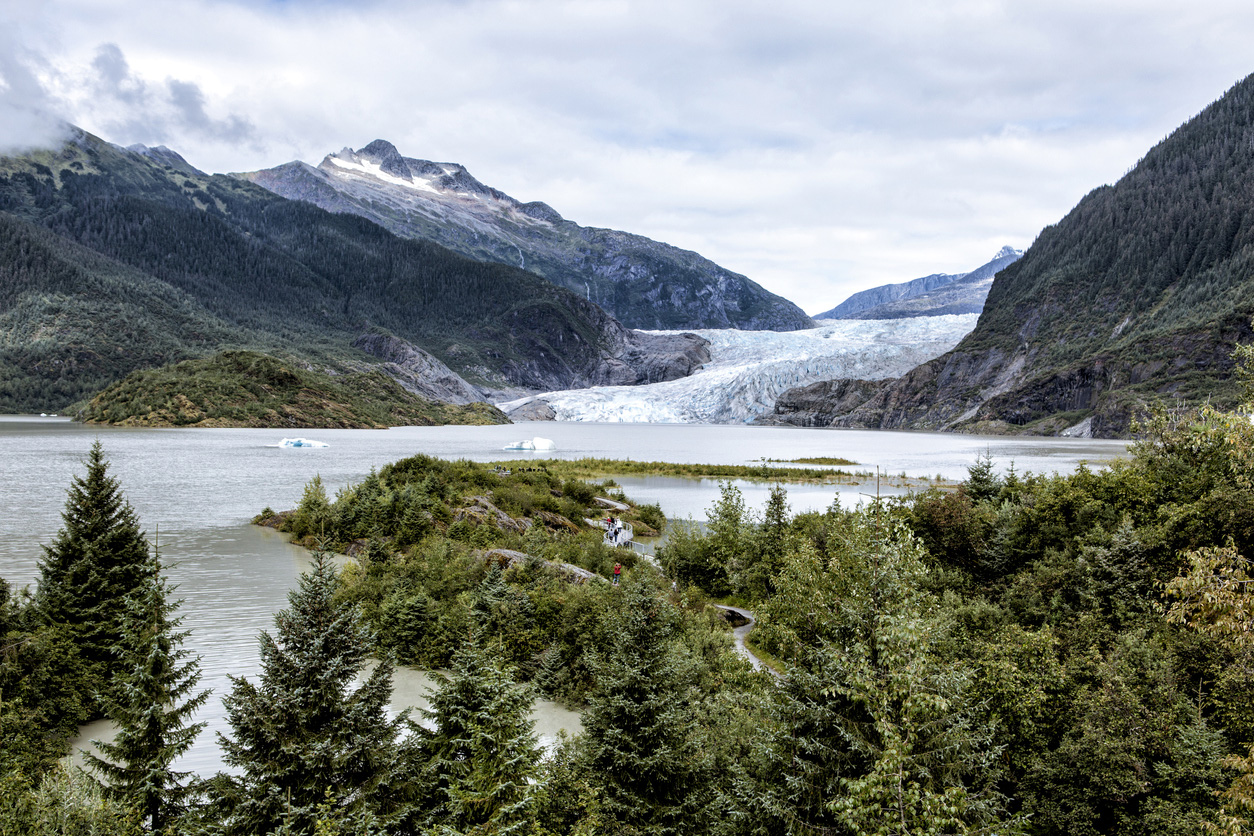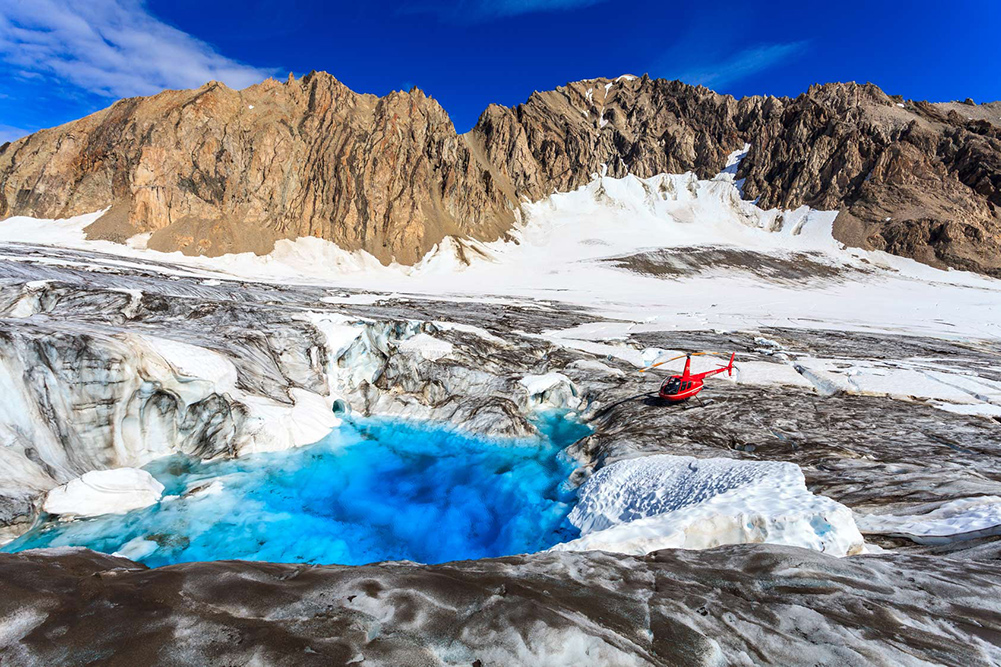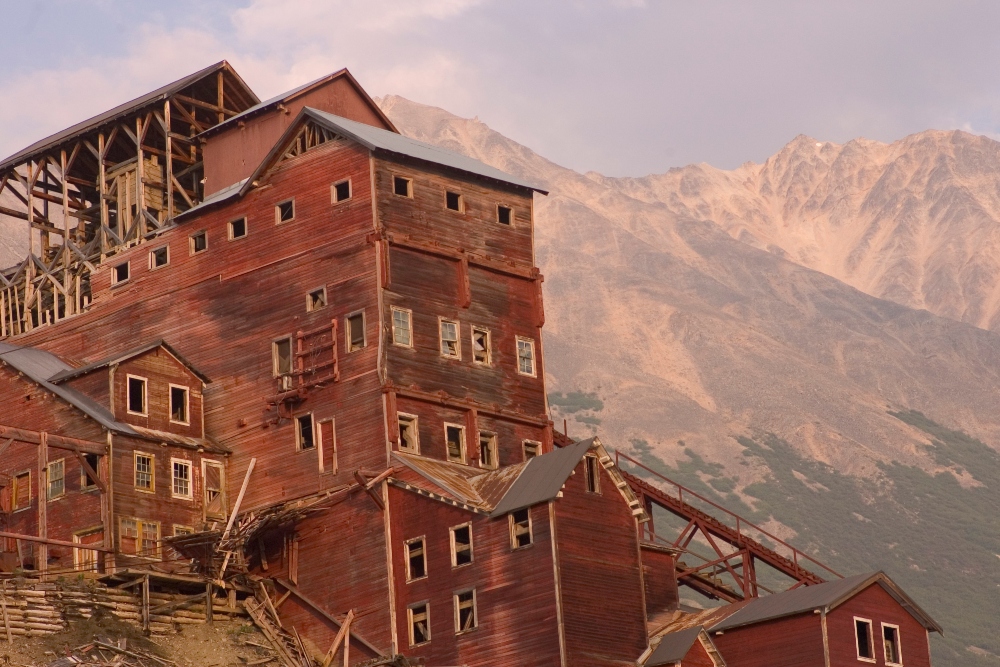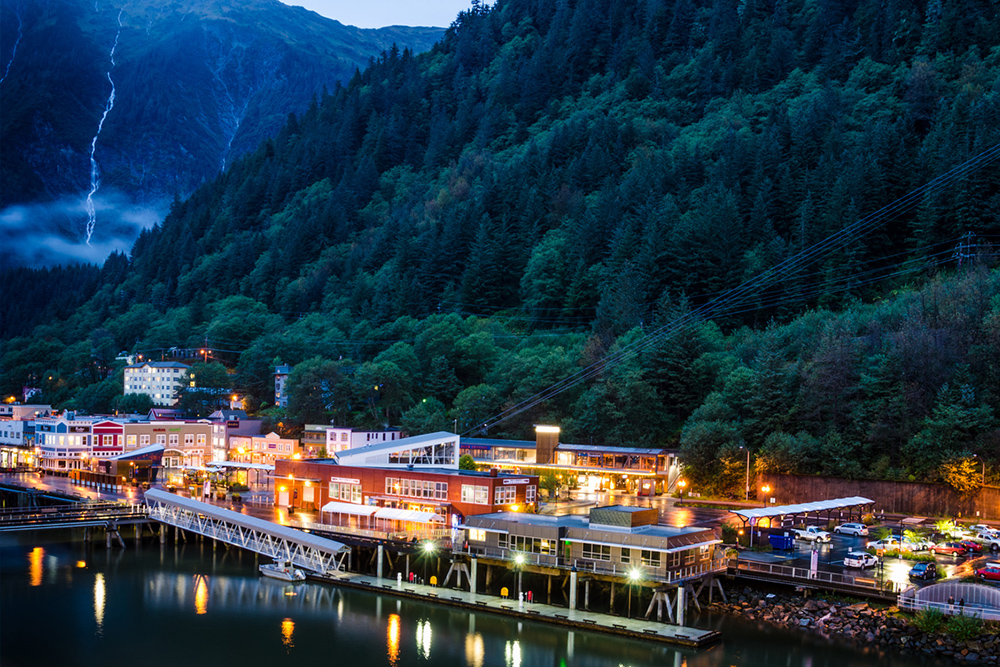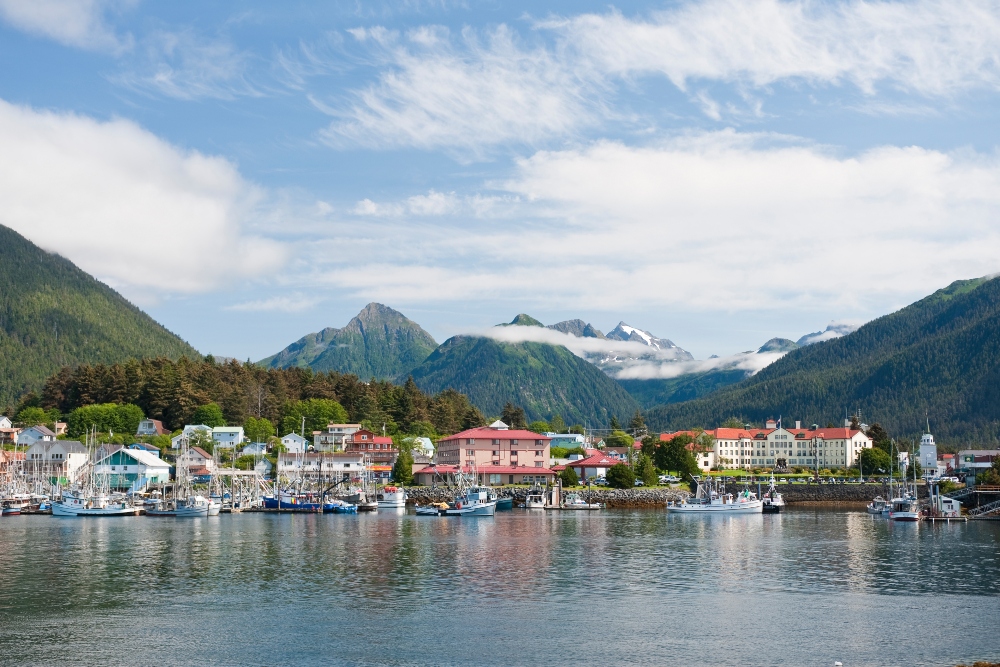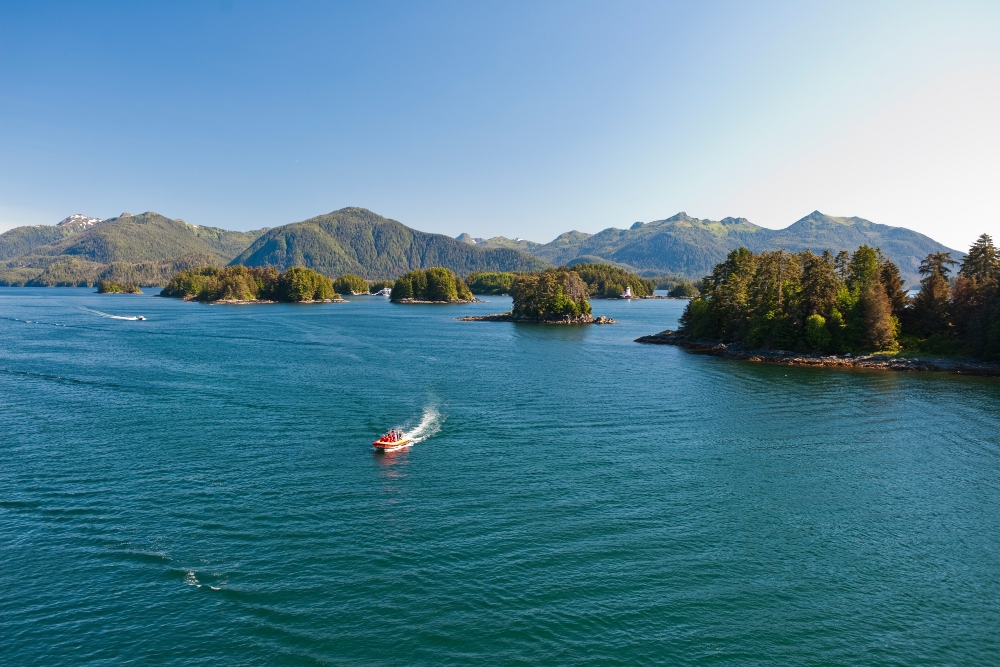Alaska, a state of excess
An American state located in northeastern Canada, Alaska offers its visitors the highest peaks in North America, the largest national parks and richer wildlife than any other American state. A veritable reserve of natural treasures, you will be amazed by its glaciers, fjords, rivers and deep forests.
Explore Alaska as a family and get to know its people and places! A wide range of activities is offered to satisfy all desires and tastes. Just a stone’s throw from the Arctic Circle, Alaska is also home to an incredible diversity of wildlife. This is the perfect place for a unique safari to create unforgettable memories!
Our favourite parks
Denali National Park and Reserve
Denali is the most famous and most visited national park in Alaska.
It takes its name from Mount Denali (6194 m) which means “the highest” in the Athabascan Native American language. The mountain was known for more than a century as Mount McKinley, named after the candidate for the American presidency in 1896. But the mountain’s original name will be reinstated by President Barak Obama in 2015, much to the relief of the Athabascan Nation, proud of its ancestral heritage.
Mount Denali is known for its rugged beauty, extreme climate and arctic location, only 400 km south of the Arctic Circle. This makes it one of the most difficult peaks to climb in the world and a Holy Grail to conquer for all extreme sports enthusiasts.
The park’s ecosystem is so exceptional that it has been classified as a biosphere reserve by UNESCO since 1976.
Glaciers cover 16% of the park’s surface, where forests, lakes and peaks are also found. This immense territory of pure nature is extremely well preserved.
Denali is home to around 40 species of mammals. A playground for caribou, mouflons, moose, marmots, it is also the territory of coyotes, foxes, wolves and especially black bears and the famous grizzly bears!
Stays are organised for the observation of animals in their natural habitat. Ornithology enthusiasts will also be in heaven as the park is home to one of the richest bird reserves in the world, with some 130 species!
From spring to late summer, many species migrate to the area, including the tundra swan and of course the golden eagle.
Kenai Fjords National Park
Kenai Fjords National Park includes some 40 glaciers, is home to about 23 species of marine mammals and almost as many bird species. Water, wind and ice have forged its sublime landscapes of fjords of course, but also bays and rocky shelters where penguins, puffins, seals and sea lions bask. Sea otters, porpoises, humpback whales and killer whales, the real lords of this territory, also live in these waters.
The park remains a must for any traveller wishing to discover the glaciers. Hikes are organised on the Harding Icefield. Bear Glacier is the most impressive, but only the Exit Glacier is accessible by road.
Kenai Fjords can of course be visited by boat, or by kayak for experienced travellers. The majesty of the glaciers, almost all of which flow into the sea to the bottom of the fjords, is simply breathtaking.
Chugach State Park
A protected natural area, this park is home to the Chugach Mountain Range, Lake Eklutna, the Eagle River and part of the beautiful Turnaway Arm Fjord, whose natural route is one of the most beautiful scenic vistas in Alaska.
The fauna is omnipresent and there are more than 45 species of animals in the park, including elk, deer and mouflon. Some protected species are also present in the park such as the brown bear and the Canada lynx.
With more than 110 footpaths, the park is ideal for hikers and outdoor sports enthusiasts. It is possible to enjoy mountain biking, fishing (with permit) or horse riding.
Katmai NTL Park
Katmai National Park has 14 active volcanoes including Novarupta and Mount Katmai which gave the park its name. After the impressive eruption of Novarupta in 1912, thousands of fumaroles and gas gushed out of the ashes. This gave rise to what is now known as the “Valley of the Ten Thousand Smokes”. It consists of lunar landscapes and is surrounded by forests, lakes and mountains. This exceptional nature forms an extraordinary ecosystem that is unique in the world.
Numerous animal species live in the park: elks, otters, red foxes, wolves, lynx, coyotes… But the Katmai National Park is above all world-famous for its 2000 or so brown bears. Travellers from all over the world come to Brooks Falls to observe the mammals that come to feed on fresh salmon during the summer migration. Their fishing technique is quite impressive and visitors will no doubt be amazed by the spectacle! Thus nourished with proteins and fats essential to their survival during the harsh winter, brown bears can measure 2.5 to 3 metres in length and weigh up to 800 kilos!
Tongass National Forest
Tongass National Forest is the largest forest in the United States and is federally protected. It covers 80% of southeastern Alaska, including Juneau, the state capital. It also includes the listed national monuments of Misty Fjor and Admiralty Island. Wild, majestic, made up of lakes, fjords, glaciers, populated by bears, whales, deer, flown over by the golden eagle… It constitutes an exceptionally rich and diversified ecosystem.
Today, the Tongass Forest is the largest reserve of large trees in the United States, but also represents one third of the world’s remaining temperate rainforests. A joy for nature lovers in its purest form!
Glacier Bay National Park
Glacier Bay is located in southeastern Alaska, about 150 kilometres from the state capital Juneau. It was named a UNESCO Biosphere Reserve in 1986 and has been a World Heritage Site since 1992. Stretching over 13,000km², its landscape is of course made up of ice fields but also spectacular fjords. Approximately one fifth of its surface area is a marine reserve, where endangered species such as the humpback whale or the Steller sea lion, commonly known as the sea lion, live.
Inside the park, Mount Fairweather rises to 4600 metres and there are 12 glaciers representing the largest concentration of ice in the world on such a surface. Hiking trails are extremely rare and it is highly recommended that you explore the park by water, as only by boat can you reach the fjords and shores. Glacier Bay is home to an abundance of typical Alaskan wildlife, which can be observed on excursions: the famous grizzly bear, black bear, moose and wolf. Of course, the marine fauna is not to be outdone and during the cruises you can see sea lions, whales and killer whales evolving in their natural habitat, to the delight of wilderness lovers.
Glacier Mendenhall
The glacier and its surroundings are part of a protected area within the Mendenhall Recreation Area and Tongass National Forest. Travellers can explore the glacier on helicopter flights from Juneau. Local operators also offer the opportunity to land on the glacier, take walks, picnic on sunny days and explore the glacier on dog-sled rides.
The more adventurous will attempt the hike to the underground cave: a hidden treasure of the glacier, shaped by the water, it reveals a magical spectacle studded with reflections and 50 shades of blue. During these tours, the local naturalist guides obviously share their knowledge and experience, but they also talk about global warming and make travellers aware of the conservation of the glacier.
Wrangell St Elias National Park
It is the largest national park in the United States with its 53,321 km². To imagine its immensity, you have to imagine 6 times the size of Yellowstone Park! Four large mountain ranges meet in the park: the Wrangell, the Chugach, the Alaska Range and the St-Elias. Nine of the sixteen highest mountains in the United States are here, including Mount St. Elias, the country’s second highest peak at 5,489 metres.
Wrangell St Elias National Park is world famous for its ice fields, including the gigantic Bagley Icefield. There are nearly 150 glaciers in the park, making it the world’s largest glacial area outside the poles. It is possible to hike on the glaciers to explore caves, lakes and waterfalls. There are only 2 routes through this immense territory, at Nabesna in the north and McCarthy-Kennicott in the central west. McCarthy-Kennicott is home to the Visitor Centre where rangers and specialist guides meet travellers.
Our favourite cities
Ketchikan
If you arrive on a cruise up the famous “Inside Passage”, the fjord that is the natural border between British Columbia in Canada and the United States, then Ketchikan will be your gateway to Alaska. Indeed, Ketchikan is the very first port of call for ships heading north, and is therefore an introduction to Alaska for many travellers who immediately fall under its spell.
A picturesque town by the bay, its panorama is worthy of a postcard: once disembarked at the tourist port, the traveller discovers, leaning against a coniferous forest, a pretty marina with houses on stilts and moored seaplanes, colourful wooden facades in many shades, and of course the snow-covered mountains as a backdrop. Located in Tongass Strait, and part of the Alexander Archipelago chain of islands, Ketchikan is known as the “Salmon Capital of the World” and has a long history in the fishing industry, the first salmon cannery in Alaska having been founded here in 1885.
Juneau
Juneau is the only capital city in the world that is not connected by road to its state. Juneau can only be reached by plane or boat. Surrounded by Mount Juneau, Mount Roberts and the Strait of Gastineau, the city’s location is simply sublime and its atmosphere is pleasant. Travellers often arrive via the port and the marina, and they visit Juneau mostly in the summer during a cruise stopover.
Visit the small town centre on foot, which has a special cachet combining pioneering and contemporary architecture. Often the walks end on the historic shopping street of South Franklin Street where you will find all sorts of small local shops, bars and restaurants. Surrounded by water on all sides, Juneau is a paradise for boat trips. The majestic Tracy Arm Fjord is a great place to sail, where ice cream parlours and wildlife will delight boaters.
Sitka
Situated on Baranof Island, Sitka is a small town full of charm. Its small historical centre can be visited on foot and you can still see some buildings with typical Russian architecture, recognizable by their domes, as well as an old Orthodox church. The combination of beautiful buildings from the pioneer period and beautiful contemporary houses on stilts in front of the marina gives Sitka a special charm.
The city faces the Pacific Ocean and the majestic Mount Edgecumbe, a dormant volcano whose silhouette is strangely reminiscent of Mount Fuji in Japan. Of course it is possible to do all kinds of outdoor activities in the area such as salmon fishing, kayaking, hiking, as well as whale, killer whale and brown bear watching cruises. Seaplane flights are also offered to visitors, and seen from the sky, this nature appears even more spectacular to them.
Due to its historical diversity, Sitka hosts many cultural or artistic events, such as the contemporary music festival, the Russian ballet performances or the festival of the Amerindian heritage. Travellers can also visit the Sitka National Historical Park, which features totem poles built by the Tlingit and Haida Native American Nations.
Anchorage
Anchorage is located in south central Alaska. It is actually sandwiched between the two arms of Cook Inlet and the towering Chugach Mountains, which provide a beautiful backdrop to the city. Average summer temperatures range from 13°C to 26°C and -15°C to 1°C in winter! With its slogan “Life Big Wild”, Anchorage has a rich and unique combination of wilderness and modern urban life. It offers a wide range of urban activities including restaurants, shopping and museums. But of course, it is also a life that is resolutely focused on nature.
10,946 hectares of municipal parks, 400 km² of green spaces that link the city to the surrounding wilderness: get ready for a breath of fresh air! Bears, grizzly bears and moose are often seen in the vicinity. There is a wide range of tours, excursions and outdoor activities through glaciers, fjords, mountains, valleys and active and inactive volcanoes.
